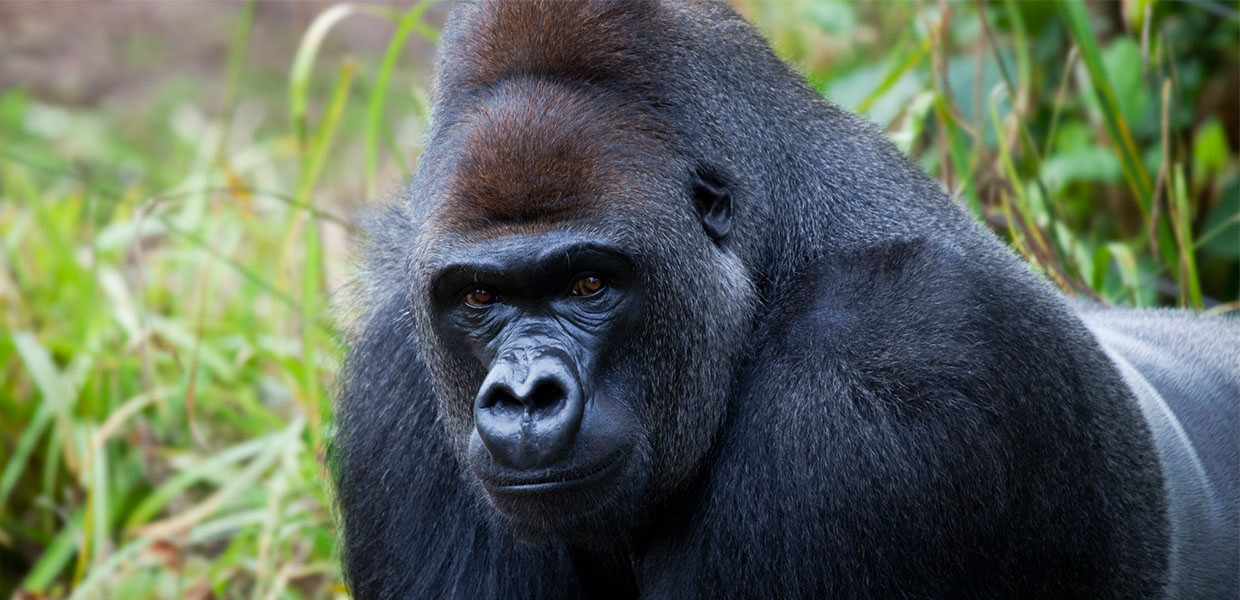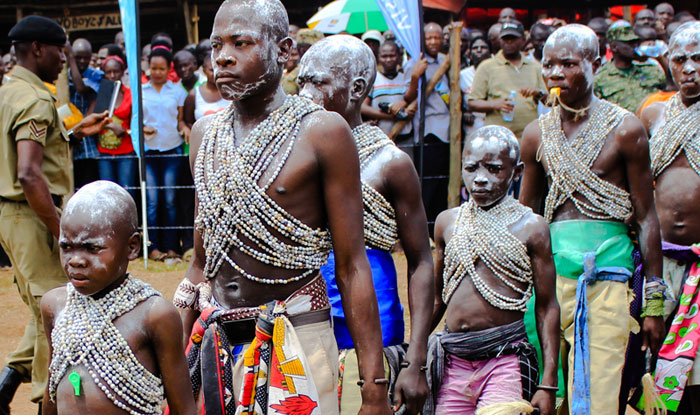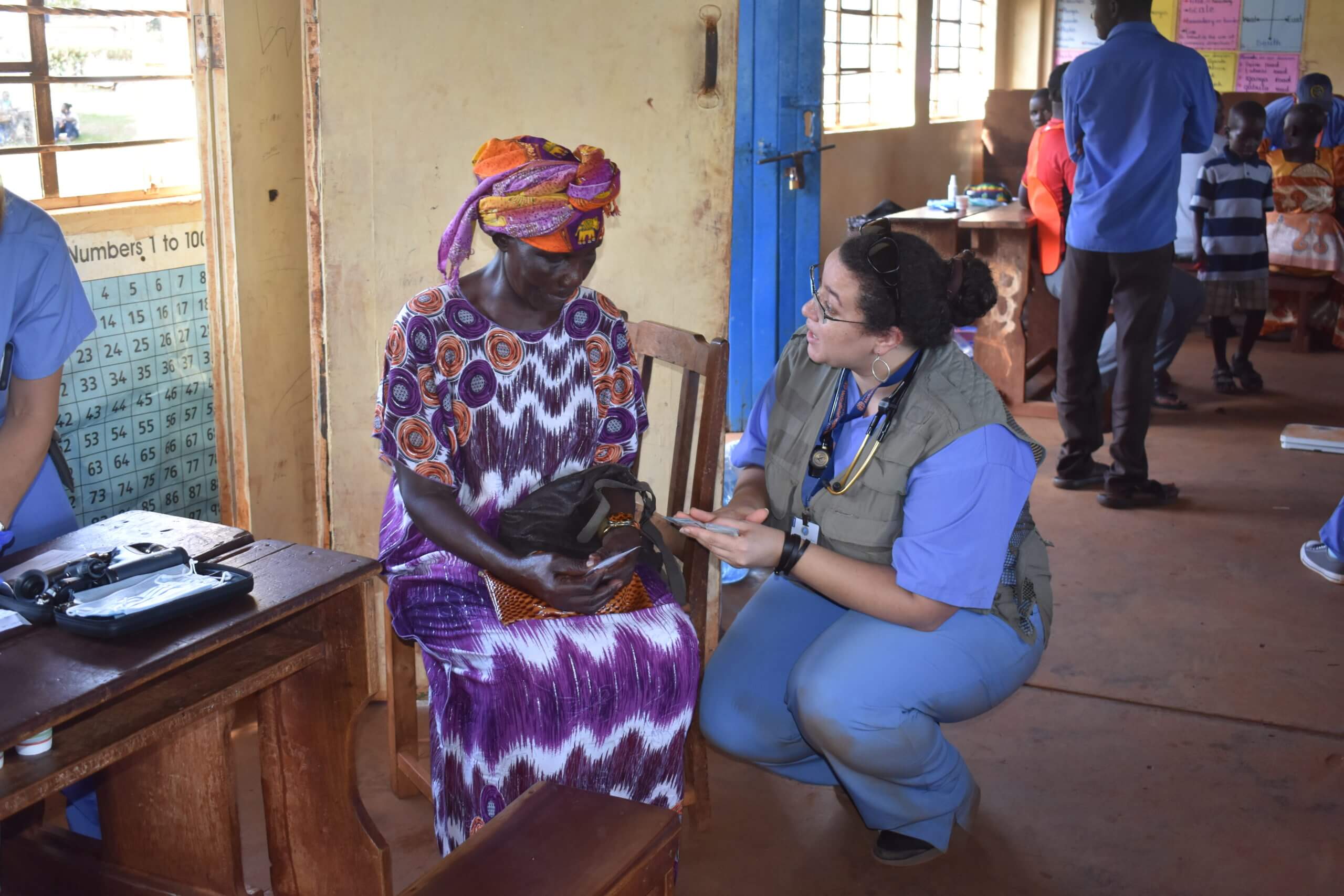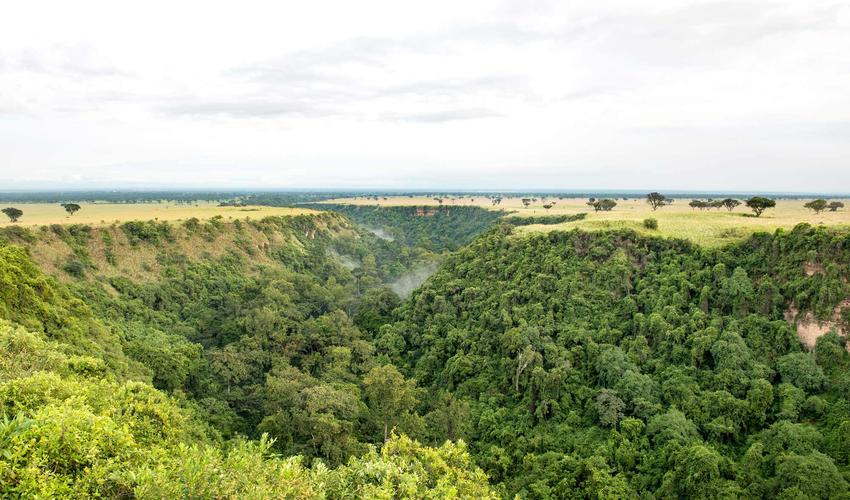Mountain Gorillas are a unique wildlife species whose existence was at the verge of extinction only to be saved by combined Conservation efforts by Uganda and other Gorilla Enthusiasts.
According to the 2010 Mountain Gorilla Census, the world’s population stands at 880 with 400 found in Bwindi Impenetrable National Park and 480 in Virunga Massif where Mgahinga Gorilla National Park -Uganda’s second Mountain Gorilla Habitat is positioned (Making Uganda home to over half the world’s Mountain Gorilla population)
Gorillas are ground-dwelling and predominantly herbivorous apes that inhabit the forests of central Sub-Saharan Africa. They are believed to be the largest mammal species in the world and are divided into two species: the eastern gorillas and the western gorillas (both critically endangered). The DNA of gorillas is highly similar to that of humans, from 95–99% depending on what is counted, and they are the next closest living relatives to humans after the chimpanzees and bonobos.
Gorillas’ natural habitats cover tropical or subtropical forests in Sub-Saharan Africa. The mountain gorillas in Uganda are only found in the primeval Bwindi Impenetrable Forest National Park (BINP) located in south-western Uganda in the Kanungu District and The Mgahinga Gorilla National Park (MGNP) is in the Kisoro District of far south-western Uganda.
Bwindi Impenetrable Forest National Park (BINP)
“Bwindi” is derived from the Runyakitara language and means “impenetrable”. This name comes from the extensive stands of bamboo interspersed amongst the larger forest hardwoods. The bamboo and thick ground cover of ferns, vines, and other plant growth severely hinder direct access on foot. Also known as the “Place of Darkness”. The park is part of the Bwindi Impenetrable Forest and is situated along the Democratic Republic of the Congo (DRC) border next to the Virunga National Park and on the edge of the Albertine Rift. BINP has total area of 331 square kilometers (128 sq mi) of both montane and lowland forest; it is accessible only on foot. BINP is a United Nations Educational, Scientific and Cultural Organization-designated World Heritage Site.
Famous for its species diversity, the park provides habitat for 120 species of mammals, 348 species of birds, 220 species of butterflies, 27 species of frogs, chameleons, geckos, and many endangered species. Floristically, the park is among the most diverse forests in East Africa, with more than 1,000 flowering plant species, including 163 species of trees and 104 species of ferns. The northern (low elevation) sector has many species of Guineo-Congolian flora, including two endangered species, the brown mahogany and Brazzeia longipedicellata. In particular, the area shares in the high levels of endemisms of the Albertine Rift.
The park is a sanctuary for colobus monkeys, chimpanzees, and many birds such as hornbills and turacos. It is most notable for the 400 Bwindi gorillas, half of the world’s population of the critically endangered mountain gorillas. 14 habituated mountain gorilla groups are open to tourism in four different sectors of Buhoma, Ruhijja, Rushaga and the Nkuringo all under the management of Uganda Wildlife Authority.
Mgahinga Gorilla National Park (MGNP)
The park is about 15 kilometers (9.3 mi), by road, south of the town of Kisoro and approximately 55 kilometers (34 mi), by road, west of Kabale, the largest city in the sub-region. The park is located within Bufumbira County of the Kisoro District. MGNP includes three of the eight Virunga Mountains volcanoes: Mount Muhabura, Mount Gahinga, and Mount Sabyinyo. These dormant volcanoes are international mountains, with Muhabura and Gahinga on the Uganda/Rwanda border, and Sabyinyo a tripoint on the Uganda/Rwanda/Democratic Republic of the Congo (DRC) borders. Mgahinga Gorilla National Park is the second habitat of the mountain gorilla in Uganda after Bwindi Impenetrable National Park with one habituated gorilla family-Nyakagezi group
Life of a Gorilla
Gorillas have a developed social structure and stable family groups. Group size varies and may be as low as 5 or as high as 50. A group is usually headed by one silverback, accompanied by one or more females and several offsprings. Gorillas are primarily herbivores, eating stems, bamboo shoots, fruit, and bark, but sometimes eat other foods such as insects.
Gorillas can live 40 years in the wild with males maturing around the age of 15. Female gorillas are sexually mature at around 7 to 8 years of age; however, they do not usually reproduce until they are 10 years of age. Female gorillas usually have one baby and rarely do they have twins, the gestation period for a gorilla lasts 8 to 9 months. Males on the other hand mature later than the females and are rarely strong and dominant enough to reproduce before 15 to 20 years of age
When a baby gorilla is born it weighs on average 2.5 kg, which is about half the weight of a human baby. However, baby Gorilla develops twice as fast. Within 40 weeks it can walk and at three years it slowly becomes independent. At six years they are about 1.20 meter tall and weigh almost 70 kg. At this age the female gorilla matures, though they continue gaining weight for the next four years. Males on the other hand do not reach maturity till they are ten years old. When their black back starts turning into grey it is time for them to leave the parental group. They wander in isolation or join other males for some time, before attracting females who will join them. In this way they form their own family.
Females usually give birth around every 4 years hence the world population doesn’t increase rapidly. There is a 40% mortality rate for newborns which means that an adult female usually only has 1 surviving offspring produced every 6 to 8 years. Therefore many females will only have 2 to 6 offspring in a lifetime.
Newborn deaths are caused by diseases, Parasites, accidents and also death of father silverback leading to attacks from the successor silverback. This new male (silverback) often kills all the babies of his predecessor, securing his own genes for the posterity. Other causes of death among mature Gorillas include predators, human activities such as poaching, deforestation/land fragmentation.
A Day In Life of a Gorilla
An ordinary day in the life of a mountain gorilla starts at sunrise, They leave their sleeping sites at around 6 am, except when it is cold and overcast; then they often stay longer in their nests.
They wake up and forage for a great part of the morning, rest in late morning and around midday, in the afternoon they forage again before resting at night. Mountain gorillas spend about half of the day eating. Rest periods take up approximately a third of the day. They spend about 6.5% of their time moving from one location to another and they are engaged in social behavior for 3.6% of their time. Social contacts occur mainly during rest periods, the midday rest period is very important for the social life of the group, as this is the time when the animals interact with their companions and when the young gorillas can play without being interrupted.
Feeding Among Gorillas
Gorillas are vegetarians, though they occasionally may eat ants and other insects. What they eat depends on what their habitat provides and on the time of the year. Mountain gorillas mainly feed on roots, leaves, stems and pith of herbs, vines and shrub, and some fruits mainly from Gallium, thistles, celery and nettles plant species.
An adult male is estimated to eat 30 kg of plants every day, an adult female about 18 kg. To be able to process these masses of plant material, gorillas have very strong chewing muscles. Their teeth are much like human teeth, except for the very long, pointed canines of adult gorilla males. The males do not use those for feeding but for fighting against competing males.
Apart from plants, they ingest soil occasionally. Perhaps this soil contains minerals that are missing in their plants, or the minerals neutralize poisonous substances in their food.
Although gorillas don’t kill big animals, they regularly eat small animals (mainly insects).
How Gorillas Sleep
Gorillas sleep in nests, which they build on the ground or in trees before dusk. Where they build the nests depends on a number of factors, such as the vegetation and the security situation. Every evening mountain gorillas construct a new nest, even if it is only a few meters from the nest they used the night before. Each animal builds its own nest; only infants sleep in the same nest as their mothers. About half an hour before it gets dark the gorillas settle in the nest. They also occasionally build nests for the midday rest.
To build a ground nest, the animals pull the branches of bushes and other plants into the centre, layer them and anchor them to each other. Other plants are bent in to form the nest rim. Tree nests are built mainly in forks of branches or similar structures. The nest has to be constructed in such a way that it can carry the weight of the gorilla. Females and young animals prefer to sleep in trees, whereas silverback males hardly ever do.
Gorilla Identification
Mountain Gorillas can be identified sometimes just by body shape, but more often by nose prints. Nose prints are the wrinkles and marks on a gorilla’s nose that are unique to each individual. Mountain Gorillas have long, silky black coats, a large body with hairless face, palms, soles and chest. Of the five sub-species of gorilla, the mountain gorilla is one of the rarest, remarkably strong, has a short trunk, a broad chest and shoulders.
Mountain Gorilla Family Structure
Mountain Gorillas are highly social and live in relatively stable, cohesive groups held together by long-term bonds between adult male mountain gorillas and female mountain gorillas. A typical Mountain Gorilla group is led by the biggest and strongest mature male gorilla. The mature male gorilla is called a ‘silverback’ because the hair on a male’s back turns from black to silvery grey as he matures. A silverbacks group normally includes a sub-adult male gorilla or two and a few female gorillas and their young ones.
Mountain Gorilla Reproduction
Mountain Gorilla males mature later than females and do not breed until they reach 15 to 20 years of age. About half of all male gorillas leave their natal groups at puberty and travel alone or with other subordinate male gorillas until they establish their own group. Once a male gorilla has established a group, he will most likely stay with that group for life unless he is ousted by another male gorilla. Fights for access to females among dominant silverbacks and lone males are intense and may result in death.
Adult female gorillas give birth to one baby about every 4 years although a surviving infant is produced only every 6 to 8 years due to high infant mortality in the first three years of life. A baby gorilla is born weighing 1.8 – 2 kilograms (4 – 4.4 pounds) after a gestation period of 251 – 295 days. Baby gorillas are carried around by their mothers and begin to walk after 30 – 40 weeks. Gorilla infants are breast feed for about 12 months. Infant gorillas normally stay with their mother for 3 to 4 years and mature at around 11 to 12 years old. Gorilla infants are weaned at 2.5 to 3 years of age.
Young male and female gorillas are classed as juvenile between the ages of about 3 and 6. During this stage, both male and female gorillas have thick black hair and black skin. Juveniles of both male and female gorillas increase in size and weight at similar rates for the first six years. At age six they are about 1.2 metres (4 feet) tall and weigh about 68 kilograms (150 pounds).
Mountain Gorilla Life Cycle
Mountain gorillas have a slow rate of reproduction. This slow reproduction makes this species even more threatened. During a 40 – 50 year life span, a female Mountain Gorilla might have only 2 – 6 living offspring. Female mountain gorillas give birth for the first time at about the age of 10 years old and will have offspring every four years or more. Female Mountain gorillas mature at about age 6 and cease to grow taller, although they continue to gain weight slowly until they reach weights of 113 – 136 kilograms (250 – 300 pounds) at ages of 10 to 11 years. Male Mountain gorillas continue to grow both in size and weight past the age of 6 years old. They do not reach maturity until they are about 12 years old. Between the ages of about 6 and 10 years, males retain the uniformly black hair color of their youth and are called ‘Blackbacks’.
The potential for population growth for undisturbed mountain gorillas is comparable to that for human beings. The gestation period is about 9 months. Gorilla mothers with an infant may not have another for up to 4 years. There is also no apparent breeding season, since births of baby gorillas occur throughout the year. However, due to mishaps and disease, many baby gorillas die in the first year of life and nearly half of all gorillas die before reaching adulthood.
The maximum life span of mountain gorillas in the wild is difficult to estimate. The longest-lived gorillas in captivity reached ages of 30 to 35 years. No gorilla has been seen in the wild that looked as aged as the oldest captive gorillas, so the life span in the wild is probably somewhat less, perhaps 25 to 30 years. There are no known mountain gorillas in captivity at present.
Mountain Gorilla Behavior
The Mountain Gorilla is a highly intelligent and gentle creature. Despite a ferocious reputation, the Mountain Gorilla rarely makes use of his incredible strength. When it comes to defending the family or breeding rights, however, it does display dominance. Mountain gorillas wander around a home range of up to 15 square miles (39 square kilometers). Mountain Gorilla spend much of their time eating. Their food includes a variety of plants, along with a few insects and worms. At night, Mountain Gorillas make a nest to sleep in. Many lightweight gorillas nest in trees, making beds of bent branches. The heavier individuals may nest in grasses on the ground. Mountain Gorilla infants snuggle with their mothers for the night.
For a long time the image most people had of a gorilla encounter included chest pounding, roaring, charging and big, bared teeth. However, researchers studying gorillas reveal a very different picture of mountain gorillas. Mountain Gorillas are peaceful, gentle, social and mainly vegetarian creatures. The occasional ferocious-looking, impressive displays are generally from a male gorilla protecting his family group from a threat. Gorillas, especially males, have a wide range of vocal and physical communications. Silverbacks can roar, scream and bark to deter predators or competitors. Mountain Gorillas stand on their legs and beat their large chests, which contain air sacks, to produce an intimidating thudding sound. Mountain Gorillas may even charge at people or gorillas they see as threatening, striking the ground with their fists in a display of aggression.
Mountain Gorilla Conservation Status
Life for Mountain gorillas is not all that peaceful. Mountain Gorillas are endangered, threatened by civil war in some areas where they live. Hunters kill them for food or trophies. Mountain Gorillas habitats (forests) are chopped down for farmland, fuel and housing. However, many dedicated scientists, conservationists, park rangers and other concerned people are working hard to protect mountain gorillas, their habitats (forests) and their way of life in the mountains.





